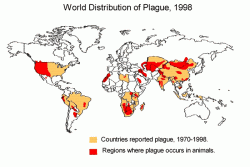483 Dead Of Cholera In Papua New Guinea...

PNG cholera death toll nearly 500
February 16, 2011 - NEARLY 500 people have died from Papua New Guinea's prolonged cholera outbreak, a top PNG medical official says.
PNG cholera death toll nearly 500
February 16, 2011 - NEARLY 500 people have died from Papua New Guinea's prolonged cholera outbreak, a top PNG medical official says.
Health Secretary Doctor Clement Malau has told PNG's National newspaper 483 people have died while 10,066 have been diagnosed with cholera since the first outbreak in September 2009. Seven of PNG's 19 provinces, including the capital Port Moresby, have been affected by cholera with Dr Malau adding Western Province was the worst hit with 300 deaths. "I am urging the provinces to sustain the response momentum and widen surveillance and awareness activities," he said. "I appeal again to local authorities at the district and provincial levels to respond effectively to the cholera outbreaks in their areas".
In December last year, there were grave concerns that cholera would spread across the Torres Strait into Australia when it was detected in Western Province and on its island centre of Daru. Travel between Australia's Torres Strait Islands and neighbouring PNG communities was restricted, with hundreds turned away in an effort to contain the potentially deadly outbreak. In relief efforts to contain the various outbreaks, the World Health Organisation (WHO), along with Australian aid agency AusAID, flew medical supplies and offered experts for logistics to contain the spread.
But it was an initial poor response and lack of funding by the PNG government that has been blamed for cholera spreading throughout the country. Australia provided $1.7 million in assistance including supplies of intravenous fluids, oral salts and water purification tablets, as well as emergency experts being flown to outbreak centres. Cholera usually makes people only mildly sick, but up to 10 per cent of patients develop a severe illness. It is transmitted by water contaminated by bacteria from an infected person or food contaminated by dirty water, soiled hands or flies.
Read more: PNG cholera death toll nearly 500 | News.com.au




